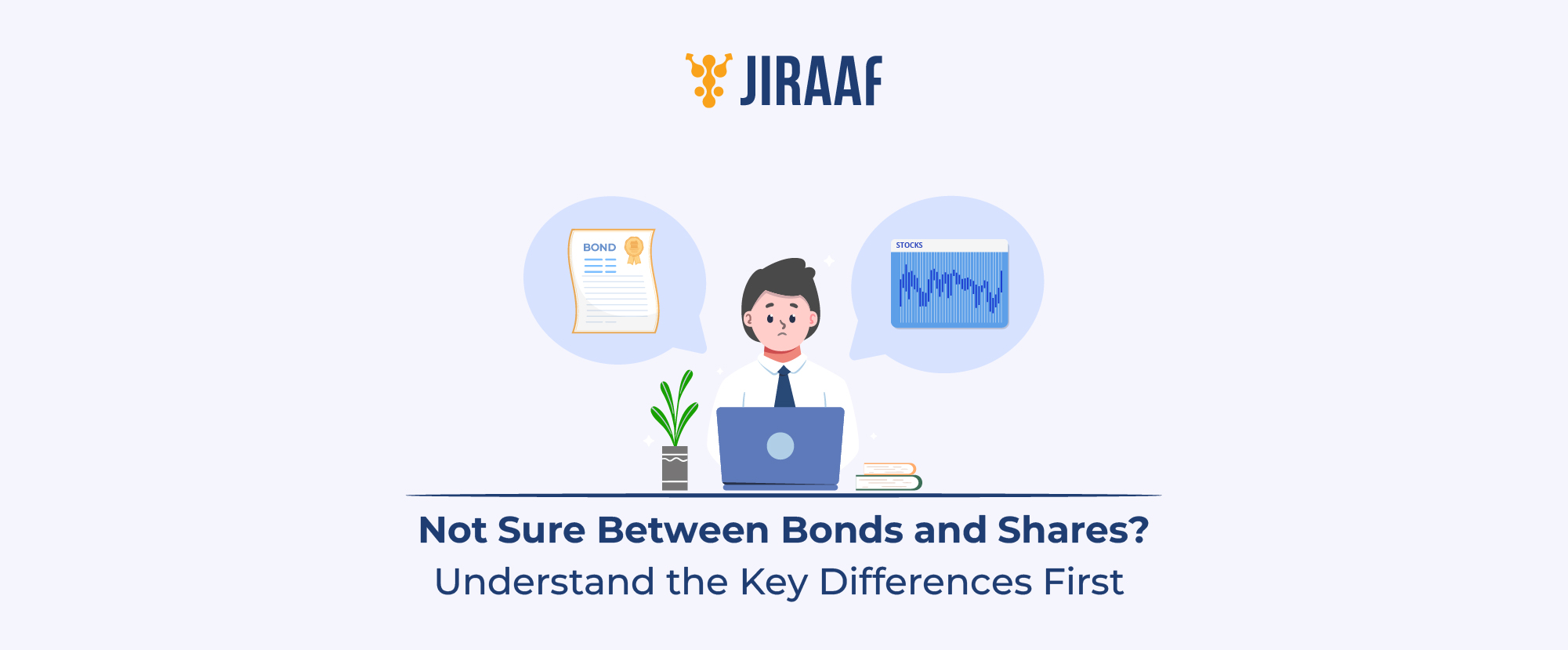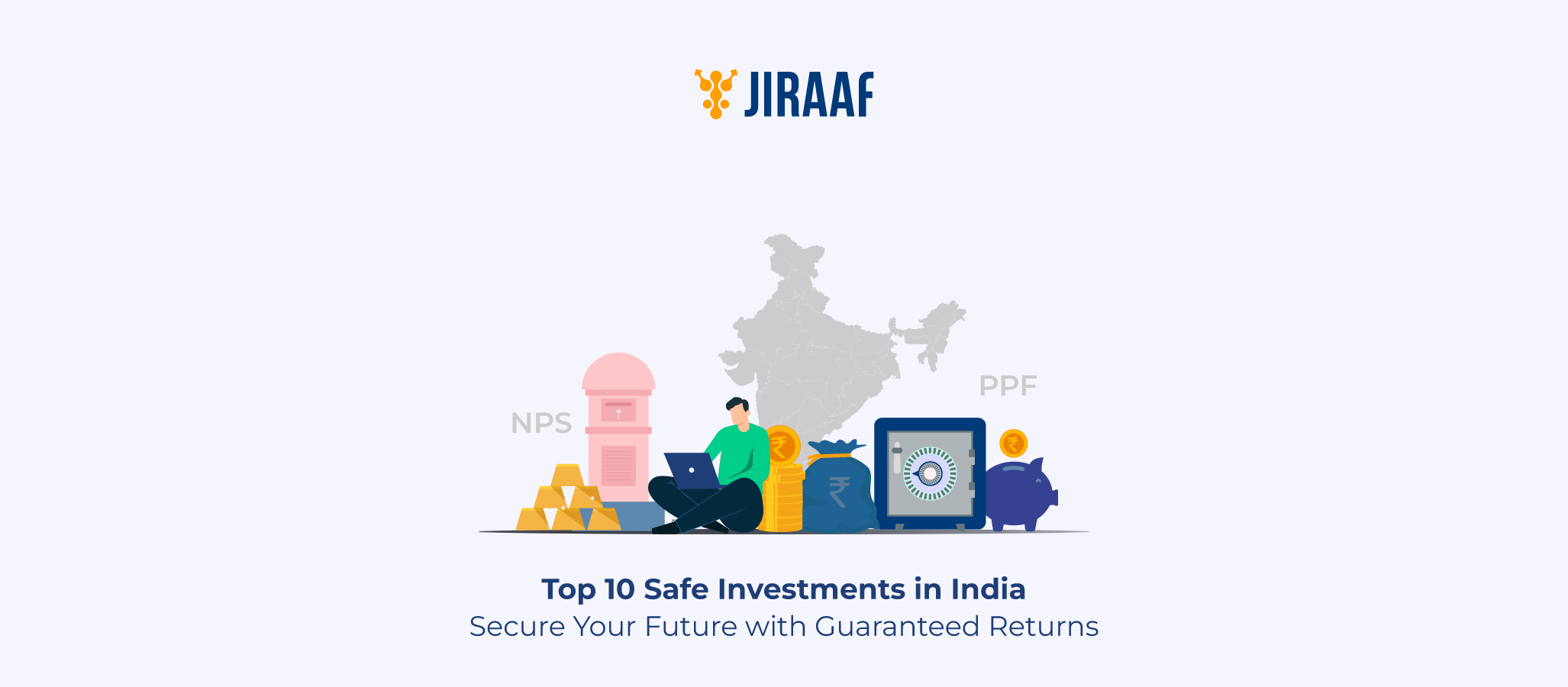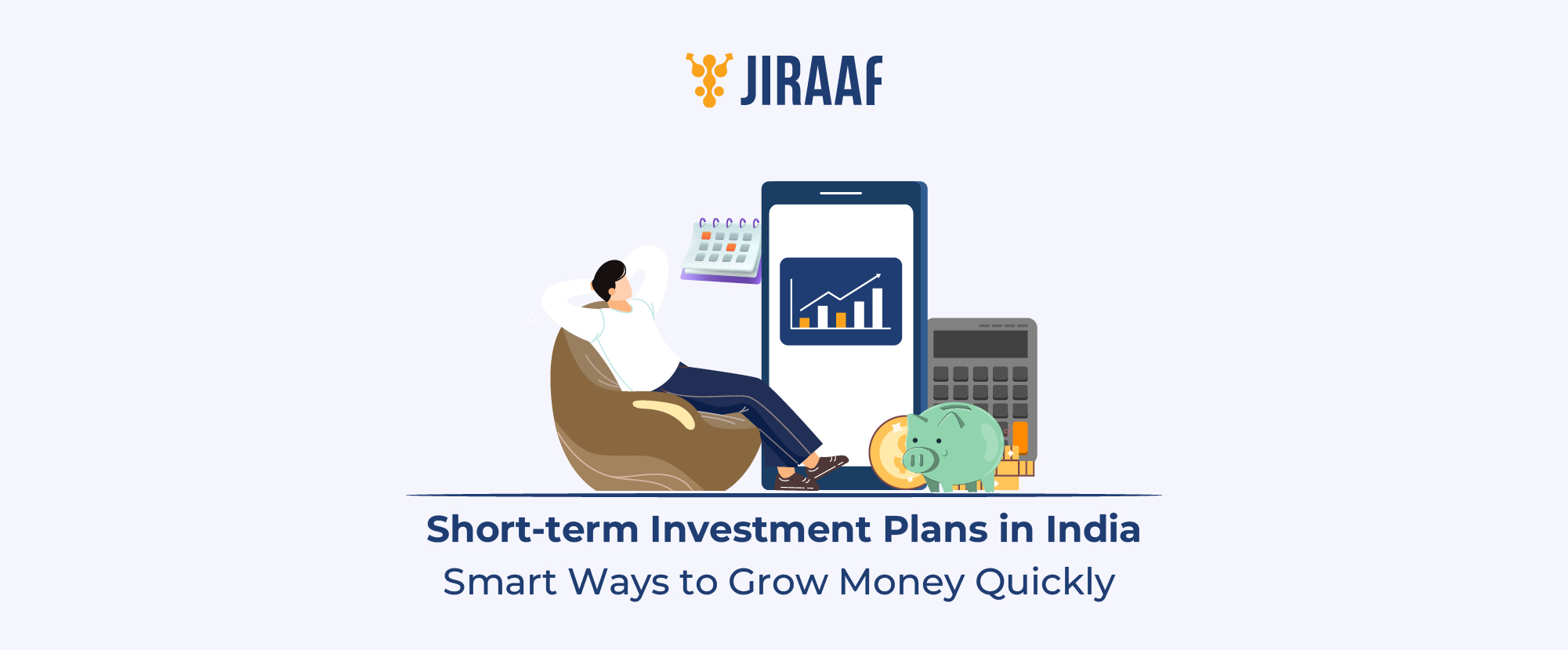If there’s one number that quietly reflects the pulse of India’s economy, it’s the 10-year government bond yield.
It may not grab headlines like GDP data or equity market volatility. Still, this single yield influences how markets price risk, how policymakers gauge inflation, and how investors decide whether to stay in bonds or shift to equities.
The 10-year yield tells you what the bond market thinks about long-term interest rates, inflation expectations, and the direction of monetary policy. When it rises, it can signal growing concerns about inflation or tighter liquidity. When it falls, it often reflects confidence that inflation is under control—or that rate cuts might be on the horizon.
And when it stays in a narrow range? That stability says a lot, too: it hints at policy credibility, predictable borrowing needs, and steady investor demand.
In this article, we break down what the 10-year bond yield is, why it matters so much in India, and what it’s been telling us lately. Whether you’re an investor, student, or simply trying to understand how the financial world works, this one number is a great place to start.
What is the 10-Year Government Bond Yield?
A 10-year government bond is a long-term loan you give to the Government of India. In return, the government pays you interest, called the coupon, every year. After 10 years, you will have recovered your full investment.
But the yield, which is the actual return you earn, depends not just on the coupon but also on the price you pay for the bond in the market.
Say a bond offers ₹70 annually on a face value of ₹1,000.
- Buy it at ₹1,000, and your yield is 7%.
- If the bond’s market price drops to ₹950, your yield rises to 7.37%.
- If it trades at ₹1,050, your yield falls to 6.67%.
This is why bond prices and yields always move in opposite directions.
The government sets the coupon at issuance, but the 10-year yield is determined by trading in the secondary market and by demand at regular RBI auctions for new issuances.
That’s where banks, mutual funds, and insurers bid competitively for fresh bond issuances. When demand is strong, yields tend to fall. If fewer buyers show up, yields tend to rise.
In effect, the yield becomes a live signal of how the market views inflation, interest rates, and risk appetite.
Why the 10-Year Duration Matters So Much
Among the many bonds issued by the Government of India, from 91-day Treasury bills to 40-year instruments, the 10-year maturity holds a special place. It isn’t the shortest or the longest, but it’s the one that financial markets treat as the benchmark.
For economists, lenders, and fund managers alike, the 10-year bond is the benchmark. It provides a clear view of long-term rate expectations while remaining one of the most liquid instruments in the market.
It sits in the sweet spot: long enough to capture views on inflation and borrowing trends, but short enough to remain actively traded and widely held.
In India’s ₹106 lakh crore government securities market, this is where most of the action happens: auctions, price discovery, and large-scale institutional trades.
The Indian 10-year bond yield has widespread influence:
- Banks use the 10-year yield to benchmark long-term loans, including housing finance.
- Insurance companies and pension funds align returns and liabilities using it.
- The government factors it into budget planning, bond repayments, and interest outflows.
- Investors, whether retail or institutional, treat it as a signal—whether to stay in fixed income, move to equities, or sit in cash.
How India’s 10-Year Bond Yield Works
The 10-year government bond is one of the primary means by which the Indian government raises long-term capital. Investors lend money for a decade in exchange for a fixed annual interest payment, called the coupon. However, in the market, what matters is the yield—the return based on the bond’s current price.
The yield moves every day, and here’s what drives it:
- RBI policy rates: When the Reserve Bank of India raises the repo rate to control inflation, bond prices typically fall and yields rise. A rate cut has the opposite effect.
- Inflation expectations: If investors believe that inflation will rise, they demand higher yields to protect real returns.
- Government borrowing: When bond supply increases to fund spending, yields often rise to attract more buyers.
- Foreign flows: The entry or exit of global investors in Indian debt markets shifts demand, which in turn affects yields.
Since bond prices and yields move in opposite directions, the yield serves as a real-time barometer of market sentiment.
For instance, if you hold a ₹1,000 face-value bond offering a 7% coupon and it trades at ₹1,050 later, your effective yield drops below 7%. The coupon stays fixed, but the price you pay changes the return.
In India, benchmark yields are tracked by platforms like Clearing Corporation of India Ltd. (CCIL), the National Stock Exchange (NSE), and RBI updates. Institutional investors monitor these levels daily to guide trading, risk, and portfolio decisions—even if most retail investors don’t.
Current 10-Year Government Bond Yield in India
On July 17, 2025, the 10-year yield was 6.305%; as of July 28, 2025, it was 6.36%. That’s the number traders see on their screens, based on live market activity between institutions like banks, mutual funds, and insurers.
But step back, and you’ll find another number: the monthly average yield for July, based on RBI auction data, sits at about 6.72%. Both figures are valid; they just capture different sides of the bond market.
What’s the Difference?
- Daily yield (e.g., 6.36%) reflects real-time trading in the secondary market. It’s sensitive to liquidity, sentiment, and demand.
- Monthly yield (e.g., 6.72%) represents an average across RBI auctions and broader market activity. It offers a macro view of the government’s effective borrowing cost.
Together, they provide investors and policymakers with a comprehensive picture: short-term momentum versus long-term trend.
Daily Bond Yield Movement (Live Market)
| Date | Yield (%) | Day Change |
| Jul 28, 2025 | 6.36 | +0.01% |
| Jul 17, 2025 | 6.305 | -0.16% |
| Jul 14, 2025 | 6.311 | +0.11% |
| Jun 24, 2025 | 6.240 | -0.95% |
Monthly Average Yields (RBI Auctions)
| Month | Yield (%) | Change |
| July 2025 | ~6.72 | -0.11% |
| June 2025 | ~6.83 | +0.09% |
| May 2025 | ~6.79 | -0.03% |
| April 2025 | ~6.80 | +0.06% |
Why Is the Yield Range-Bound?
Over the past four months, the 10-year yield has remained within a tight range, averaging between ~6.72% and ~6.83% on a monthly basis and between 6.24% and 6.36% on a daily basis.
This signals:
- Stable inflation expectations
- Predictable monetary policy
- Steady demand from banks, pension funds, and foreign portfolio investors
This kind of narrow band indicates market confidence in the central bank’s current stance.
How Different Players Read the 10-Year Yield
The 10-year bond yield might seem like a quiet background number—but it speaks volumes, depending on who’s listening.
For retail investors, it indicates the stability or volatility of fixed-income returns. A steady yield gives comfort: interest income stays predictable, and bond fund NAVs don’t swing too wildly.
For banks and insurers, it serves as a daily revaluation tool. A drop in yields means older bonds gain value on their books. If yields rise, the same holdings lose mark-to-market value.
For economists and policy watchers, the yield curve isn’t just a shape—it’s a mood indicator. A rising 10-year yield can signal concerns about inflation. A dip often suggests the market is betting on a pause or policy easing.
Foreign Portfolio Investors (FPIs) watch the spread between Indian bonds and U.S. Treasuries. If India offers a healthy real yield and the rupee remains steady, inflows are likely to pick up. However, when that gap narrows or inflation flares up, money moves out quickly.
A Quick Look Back: The Yield in Context
To know what today’s numbers mean, you’ve got to zoom out.
The 10-year yield has moved in line with the market’s mood—rising during inflation spikes, softening when policy stabilizes, and tracking closely with RBI rate moves. It’s not just a number. It’s a story in progress.
Average Annual Yields – 10-Year Government Security (G-Sec)
| Year | Average Yield (%) | Macro Context |
| 2025 YTD | ~6.7 | Stabilization amid easing inflation |
| 2024 | 6.8 | Elevated yields on global tightening risks |
| 2023 | 7.0 | Peak tightening cycle; inflation volatility |
| 2022 | 6.8 | RBI began rate hikes to control inflation |
| 2021 | 6.2 | Post-COVID low-rate regime; ample liquidity |
Over the last few years, the 10-year yield has remained largely within a narrow band, rising as high as 7.3% and dipping to around 6.2%. The sharp jump in 2023 came as the RBI hiked rates aggressively to contain inflation.
By mid-2025, with price pressures easing and no new surprises from policymakers, the yield began to settle. Markets seemed to agree that the heavy lifting on rates was likely done.
The 10-year isn’t just about rates. It also reflects the market’s trust in the RBI’s direction, the expected behavior of inflation, and the global trends influencing domestic borrowing costs.
Why Does It Matter to You?
The 10-year government bond yield might not make daily headlines, but it influences key financial decisions, whether you’re a borrower, an investor, or tracking markets.
RBI Policy Moves
The bond market and the RBI usually move in sync, but not always at the same time. Traders often adjust well before the central bank acts. If inflation starts creeping up, yields may rise days or even weeks ahead of a policy hike.
A rising yield can indicate that markets expect further tightening. A drop usually signals the opposite: that a pause or rate cut could be coming.
In early 2023, the yield rose above 7.0% as inflation persisted. By mid-2025, with price pressures easing, the yield had slipped to around 6.3%, a sign that the market was finally seeing stability.
Stock Markets
Bond yields act as a discount rate for equity valuations.
- Higher yields lower the present value of future earnings, hitting growth stocks harder.
- Sudden spikes in the 10-year often trigger corrections in broader indices.
Loans and Mortgages
Long-term lending rates, such as home or education loans, are often benchmarked against the 10-year yield, plus a risk premium. A 30–40-basis-point move in the yield can shift EMIs, especially on large-ticket or floating-rate loans.
Mutual Funds and Debt Products
When yields rise, bond prices fall, which hurts the Net Asset Values (NAVs) of debt funds. Conversely, falling yields result in price gains for long-duration schemes. This makes the 10-year yield a key reference for anyone in government bond funds, gilt funds, or debt strategies.
Why Invest in 10-Year Government Bonds?
Whether markets are calm or unpredictable, the 10-year government bond holds its place for a reason. It offers capital safety, steady returns, and the backing of the sovereign; all without the noise of daily market swings.
Here’s why many long-term investors still rely on it.
1. Backed by the Government
You’re lending to the Government of India, which means default risk is as close to zero as it gets. That makes it a safer bet than most bank FDs or corporate bonds.
2. Predictable Income for a Full Decade
The coupon rate is locked in for 10 years, paid out every six months. Unlike stocks or floating-rate options, you know exactly what’s coming in—and when.
3. No TDS, No Lock-In
There is a Tax Deducted at Source (TDS) of 10% on interest payouts, and all interest income is taxed as per your income tax slab.
4. Easy to Access, Easy to Exit
Weekly auctions and a vibrant resale market allow you to enter with low ticket sizes (₹10,000) and exit without hassle. Fixed-income platforms, such as Jiraaf, have made the process even simpler for individual investors.
5. Matches Long-Term Liabilities with Certainty
For pension funds, insurers, and even High-Net-Worth Individuals (HNIs), the 10-year bond is a practical fit. It aligns well with long-term outflows, like annuity payouts or maturity-linked returns, offering a reliable stream of cash flow.
What the Yield Curve Says About the 10-Year Bond
The yield curve represents the interest rates of government bonds across different maturities, including 1-year, 5-year, 10-year, and 30-year, and reveals how the market views growth, inflation, and future interest rate direction.
Why the 10-Year Yield Stands Out
In the world of government bonds, the 10-year mark isn’t just another data point; it’s the benchmark. Investors look to it when deciding whether to lock in capital for a decade, and policymakers use it to gauge long-term borrowing costs.
It also anchors lending rates, investment models, and how markets interpret the direction of interest rates.
When the Curve Looks Normal
In most conditions, longer-term bonds offer higher yields than shorter ones. That upward slope signals market confidence, expectations of growth, moderate inflation, and no sudden policy shocks.
As of July 2025, India’s 10-year bond yield curve retains this shape.
| Maturity | Yield (%) |
| 1-year | ~5.59 |
| 10-year | ~6.36 |
| 30-year | ~6.50 (est) |
This suggests that the market anticipates gradual economic growth, with no major surprises in inflation or policy.
When the Curve Flattens or Slips into Reverse
Typically, longer-term bonds offer higher yields than short-term ones. But sometimes, that relationship flips. When investors start expecting slower growth or policy easing, short-term yields can creep up and flatten or even overtake the long end of the curve.
That’s not precisely what happened in early 2024, but the gap did narrow substantially as the RBI paused rate hikes, and short-term yields at times drew close to the 10-year yield.
Why It Matters
The shape of the yield curve doesn’t just show interest rate levels—it tells a story.
- Steep curve → Confidence in growth and inflation staying strong
- Flat or inverted → Markets are hedging against a slowdown or looking for rate cuts
Where does the 10-year yield sit on that curve? That’s often the clearest signal of how far ahead or behind the market thinks the economy is.
India’s yield curve—source: Reuters
Why Should You Track the 10-Year Government Bond Yield
The 10-year GOI bond yield rarely makes front-page news, but it shapes more financial decisions than most people realize.
It influences how markets price risk, how institutions allocate their portfolios, and how investors decide between debt, equity, or holding cash.
Inflation expectations, interest rate outlook, and government borrowing are all factored into this one number. And in a market where policy can shift quickly, tracking the 10-year yield gives you an edge, whether you’re watching from a trading desk or managing your investments.
Discover fixed income investments with Jiraaf, a SEBI registered online bonds platform that educates and brings access to a wide array of bonds. Sign up today to explore diversified fixed income investment opportunities to support your goal-based wealth creation journey. Start investing!









